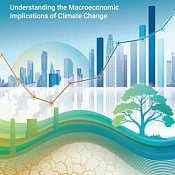Economic and Social Survey of Asia and the Pacific

Title:
Economic and Social Survey of Asia and the Pacific
Tags
Economic Development/ Key National Indicators (KNIs)
Summary
The Economic and Social Commission for Asia and the Pacific (ESCAP) has analyzed the economic development prospects of countries in the region. In 2024, the Asia-Pacific region accounted for 60% of global economic growth, driven by rising exports of services (such as tourism and finance) and high-tech goods. A decline in global commodity prices and tight monetary policies contributed to a decrease in the region’s average inflation rate from 5.2% in 2023 to 4.8% in 2024. Despite this positive trend, the economic growth rate in developing countries in the region slowed from 5.1% in 2023 to 4.7% in 2024. Projections for 2025 and 2026 stand at 4.4% and 4.3%, respectively. Key risks include rising trade protectionism, persistently high interest rates, commodity market volatility, and shifts in China’s economic policy (whether through expansion or withdrawal of stimulus measures). Experts have placed particular focus on the macroeconomic consequences of climate change. Damage to agricultural production and industrial output is increasing import needs, contributing to inflation and unemployment, and placing greater pressure on public budgets. Out of 30 countries in the region, 11 have been identified as the most vulnerable to climate-related macroeconomic risks: Afghanistan, Vietnam, Iran, Kazakhstan, Cambodia, Laos, Mongolia, Myanmar, Nepal, Tajikistan, and Uzbekistan. To ensure long-term growth, it is recommended that governments expand support for high value-added sectors and integrate climate risk considerations into strategic planning.
Type of organization
International organization (IO)
Organization name
United Nations
Type of publication
Report
Language
English
Publication date
08 April 2025
